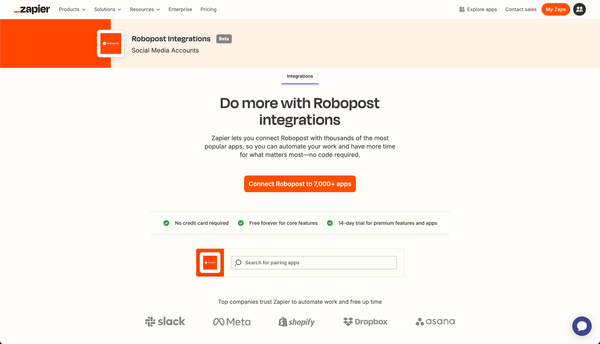Automated Workflows: The Backbone of Efficient Social Media Management
Explore how automated workflows enhance social media management, streamline processes, and improve efficiency in our detailed guide.

Automated systems are key for managing social media efficiently. These tools help streamline the creation, scheduling, and tracking of social media posts, keeping everything consistent and aligned with brand goals. By automating routine tasks, teams can spend more time on creative and strategic work. This article looks at different parts of social media workflows and offers tips on how to use them effectively.
Key Takeaways
- Automated systems are important for managing social media efficiently, allowing teams to focus on strategy.
- Scheduling posts and automating tasks ensures a consistent presence and improves engagement timing.
- Regularly reviewing and adjusting workflows based on performance is essential for long-term success.
Understanding Social Media Workflows
Definition and Importance
A social media workflow is a clear plan that outlines all the steps for managing social media activities, like planning, creating, posting, and reviewing content. It helps keep everything organized and ensures a consistent presence across all platforms.
Key Components
A social media workflow has four main parts: creating content, scheduling posts, getting approvals, and tracking performance.
- Content Creation: Coming up with ideas, writing posts, and making images or videos.
- Scheduling: Deciding when and where to post on different platforms.
- Approval: Ensuring the content fits the brand before it goes live.
- Performance Monitoring: Checking how people respond to the posts to improve future content.
Streamlining Processes
To make social media workflows more efficient, it's important to use tools that can automate repetitive tasks and provide useful data insights. This saves time and enhances the quality of social media campaigns. By simplifying your social media workflow, you can reduce manual tasks and focus more on strategy and content creation.
Efficient Scheduling and Automation
Planning and automating your social media posts are essential for effective account management. This approach helps maintain a consistent online presence, reach your audience at optimal times, and frees up time for other important tasks. Here’s how you can make the most of these strategies.
Benefits of Automation
Automation does more than just schedule posts. It can also automatically repost popular content, respond to comments, and collect relevant content for your audience. The benefits include:
- Saving Time: You can schedule posts in advance, allowing you to focus more on strategy.
- Consistent Branding: Automation helps ensure your brand voice remains consistent across all platforms.
- Easy Access to Analytics: Automation tools provide detailed reports to track the effectiveness of your social media efforts.
Tools and Techniques
To effectively use automation in your social media strategy, consider these tools and techniques:
- Social media management platforms like Robopost allow you to schedule posts in advance for multiple platforms.
- Automation software can help gather and repost content, manage interactions, and more.
- Analytics tools help you monitor performance and adjust your strategies as needed.
Best Practices
When incorporating automation into your social media workflow, keep these best practices in mind:
- Plan your content calendar ahead of time to ensure smooth posting.
- Regularly review and update your automation settings to stay in line with current trends and audience preferences.
- Balance automated posts with manually created content to keep your social media presence authentic and engaging.
Types of Social Media Workflows
Basic Workflow Overview
There isn't a single solution for social media workflows, but a basic workflow should cover all daily activities, divided into a few main stages. This basic structure helps make sure that every post is done consistently and efficiently.
Posting Workflow Steps
Social media posting workflows include creating and scheduling content for different platforms. This process usually has eight clear steps to ensure that content is delivered smoothly.
Content and Approval Workflows
Sometimes, you need several social media workflows, such as ones for creating and approving content. These specific workflows help manage the steps involved in making, publishing, and promoting posts. They include tasks like drafting, scheduling, getting approval for content, and analyzing the results.
Implementing Your Social Media Workflow
Step-by-Step Guide
To effectively create a social media workflow, start by outlining each step, from making content to posting and monitoring it. Make sure everyone on the team knows their specific roles and what tools they will use. Here are the steps to set up your workflow:
- Identify the stages of the workflow (like planning, creating, approving, and scheduling).
- Clearly assign tasks and roles to team members.
- Choose and set up the tools and platforms you’ll use.
- Train your team on the workflow and tools.
- Test the workflow on a small scale to see how it works and make improvements.
- Fully implement the workflow and keep monitoring it regularly.
Integration with Existing Systems
Connecting your new social media workflow with your current systems is important for smooth operations. This may include linking your social media management tools with content management systems (CMS), customer relationship management (CRM) systems, or analytics tools. Good integration helps avoid duplicate work and makes everything more efficient.
Monitoring and Adjusting
Keeping an eye on and making changes to your social media workflow is important to ensure it works well. Use analytics tools to see how things are performing and find areas that need improvement. Make adjustments to your workflow based on what you learn to make managing social media better. Also, think about reviewing and updating your workflow regularly to stay in line with new trends and technologies.
Leveraging Templates and Tools
Utilizing Pre-made Resources
Using templates and pre-made resources can save a lot of time and effort when managing social media campaigns. For example, businesses in Japan often use standardized templates to maintain consistency in their messaging across platforms like LINE or Twitter. This allows teams to concentrate on creating unique content and fine-tuning their strategy, rather than spending time on repetitive tasks like formatting or scheduling. It’s like having a ready-made framework that frees you up to focus on more important, creative aspects of your marketing.
Customization Tips
Customizing templates effectively is important to make sure they fit your brand's guidelines and campaign goals. Adapting these resources helps maintain your brand's unique identity while still taking advantage of the time-saving benefits that pre-made solutions offer.
Streamlining Approval Processes
Having a smooth approval process is key to keeping content production moving quickly while still ensuring quality. You can use automation tools to help manage approvals, making sure all content meets the necessary standards before it gets published.
Conclusion
Automated workflows are essential for managing social media effectively. They simplify tasks like creating, scheduling, and approving content, which boosts efficiency, ensures consistency, and helps maintain a strong brand presence across different platforms. As we've discussed, clearly defining roles and responsibilities while using automated systems saves time and improves the overall social media strategy. By adopting these automated workflows, teams can concentrate more on important tasks rather than the small details of social media management, leading to better results and increased engagement.
